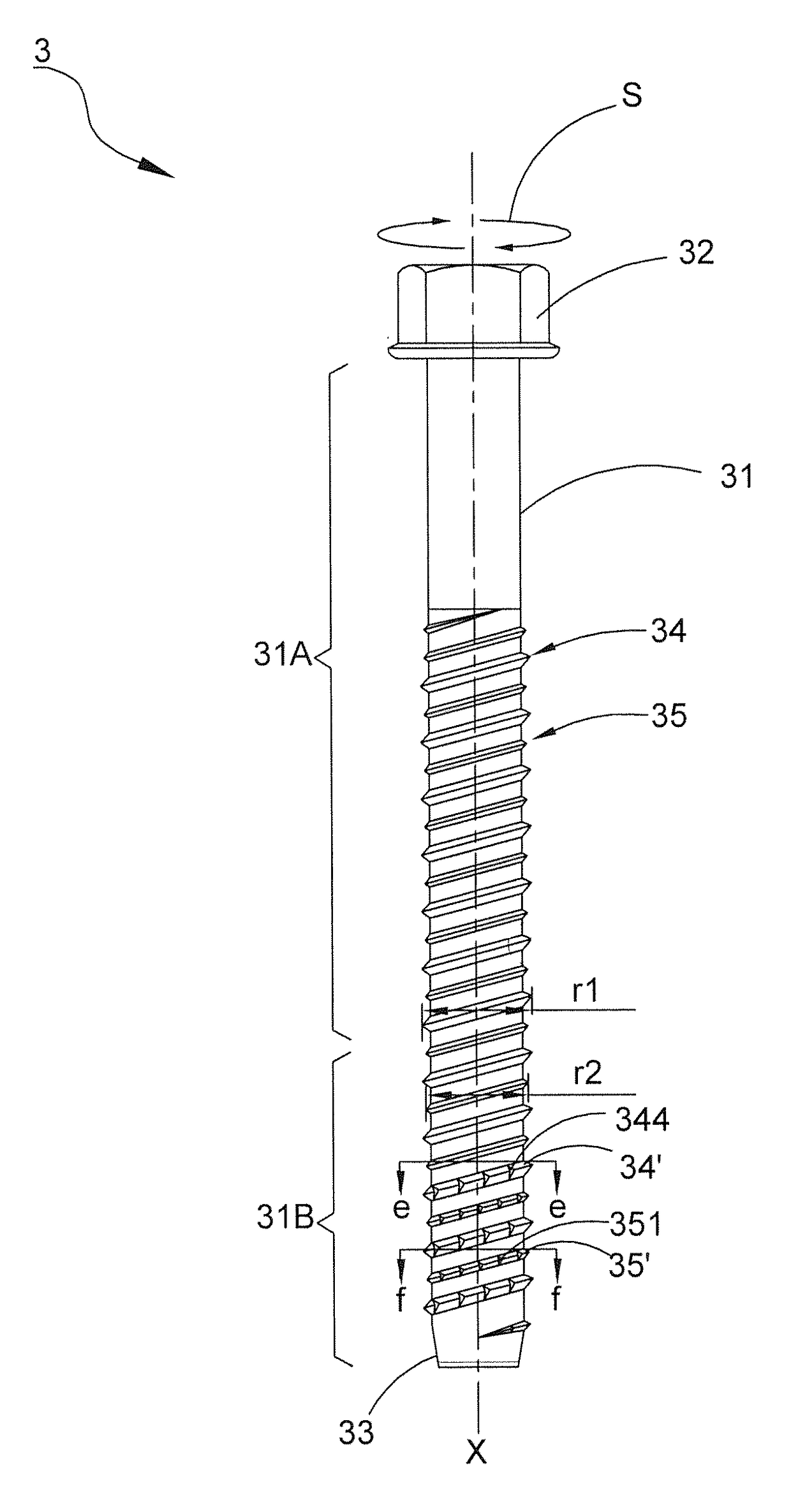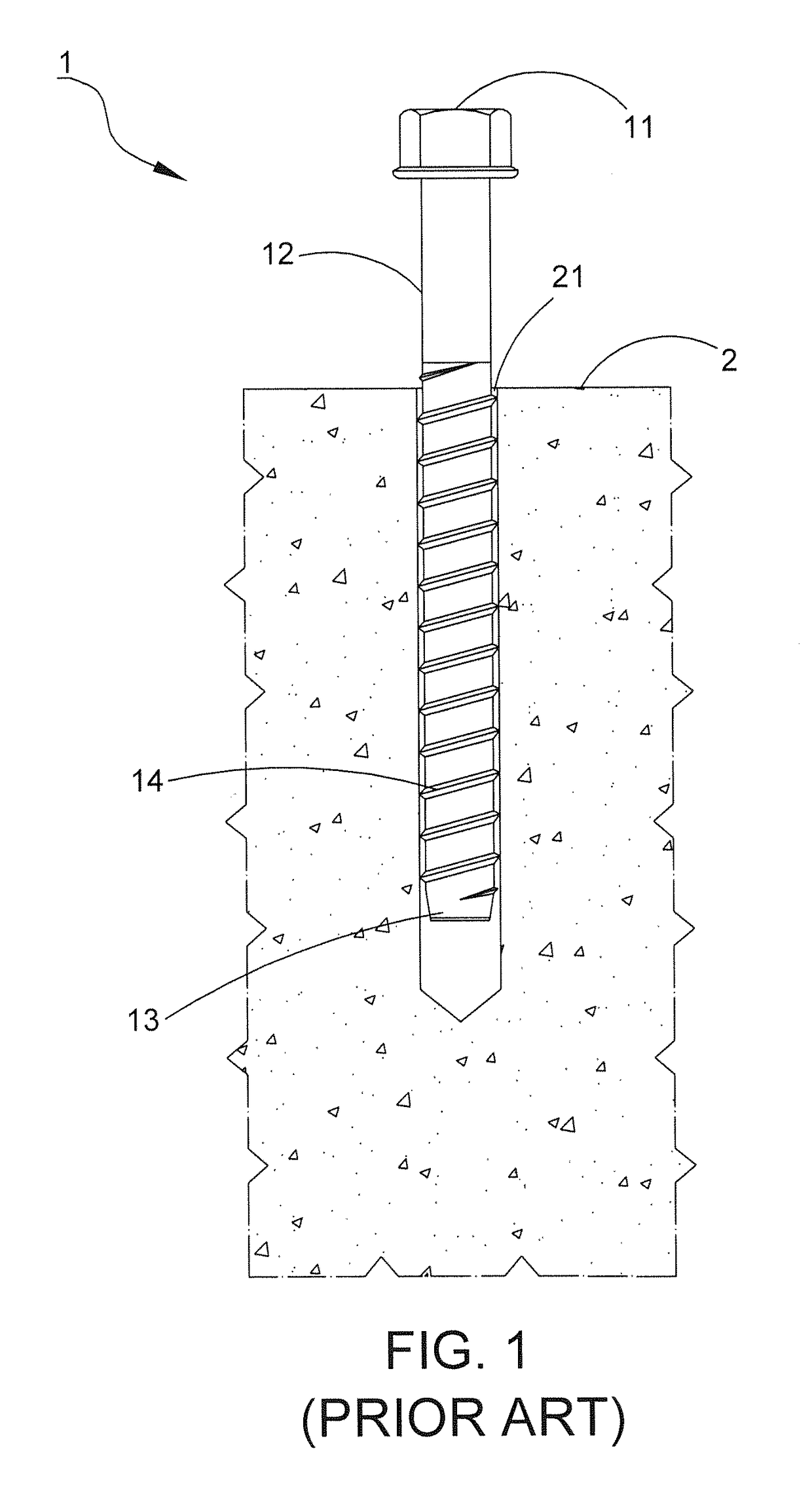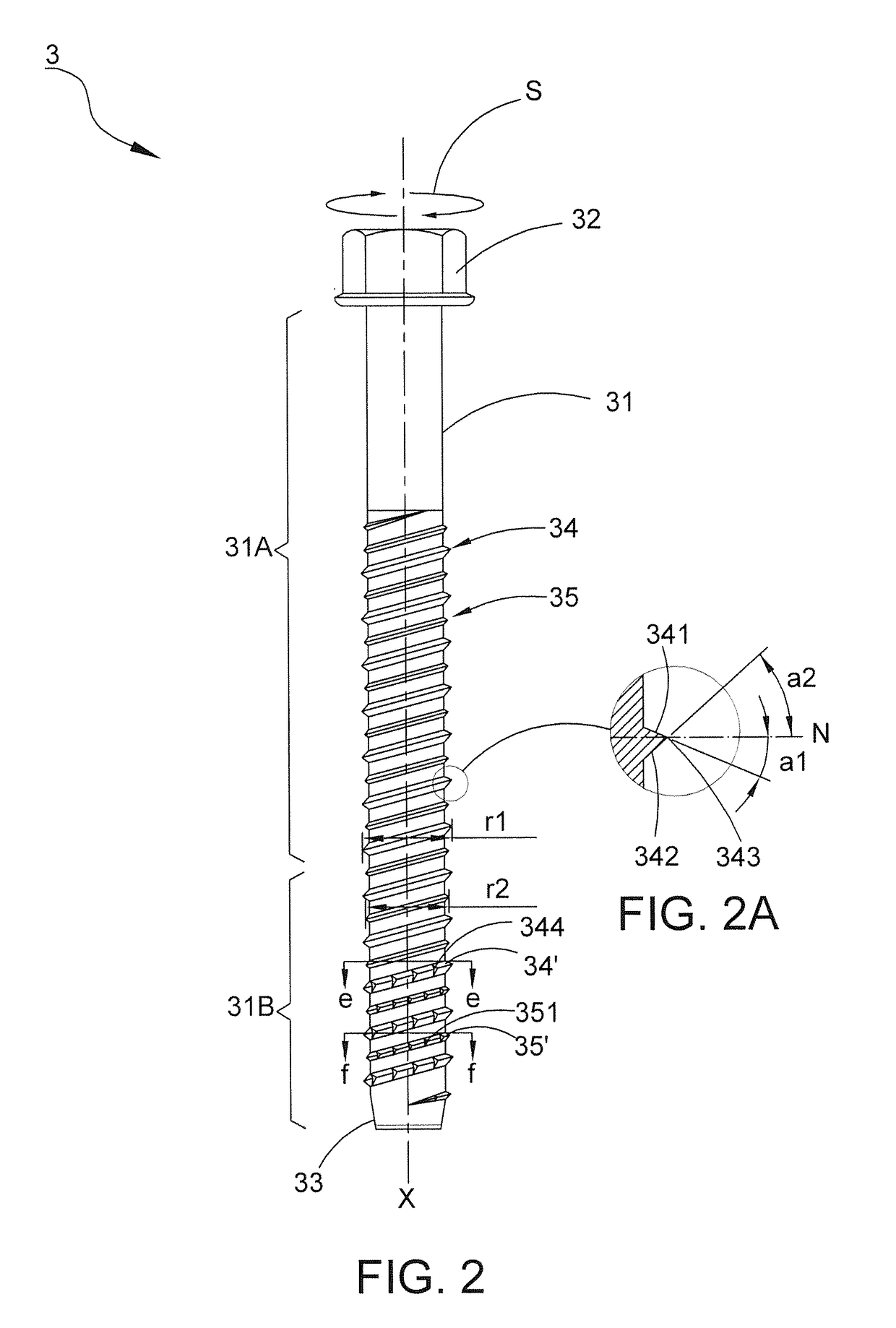Fastening bolt for use in concrete
a technology for fastening bolts and concrete, applied in the direction of fastening means, screws, threaded fasteners, etc., can solve the problems of inability to break the concrete wall, time and effort required to drill, and the conventional structure still has problems, etc., to achieve convenient mechanical properties, resist the effect of drilling resistance and quick drilling operation
- Summary
- Abstract
- Description
- Claims
- Application Information
AI Technical Summary
Benefits of technology
Problems solved by technology
Method used
Image
Examples
Embodiment Construction
[0017]Referring to FIG. 2, a fastening bolt 3 for use in concrete of the first preferred embodiment includes a shaft 31 defining a central axis X, a head 32 disposed on a first end of the shaft 31, a drilling portion 33 formed on a second end of the shaft 31 opposite to the first end, a plurality of first threads 34, 34′ spirally disposed on the shaft 31 and extending from the drilling portion 33 toward the head 32, and a plurality of second threads 35,35′ spirally disposed between the first threads 34, 34′. Also referring to FIG. 2A, each of the first threads 34, 34′ has a trailing surface 341 facing the head 32 and a leading surface 342 facing the drilling portion 33. The leading surface 342 and the trailing surface 341 converge on a thread ridge 343. A line N perpendicular to the central axis X of the shaft 31 is defined to pass the thread ridge 343. The leading surface 342 and the trailing surface 341 are respectively orientated at respective angles. In other words, the leading ...
PUM
 Login to View More
Login to View More Abstract
Description
Claims
Application Information
 Login to View More
Login to View More - R&D
- Intellectual Property
- Life Sciences
- Materials
- Tech Scout
- Unparalleled Data Quality
- Higher Quality Content
- 60% Fewer Hallucinations
Browse by: Latest US Patents, China's latest patents, Technical Efficacy Thesaurus, Application Domain, Technology Topic, Popular Technical Reports.
© 2025 PatSnap. All rights reserved.Legal|Privacy policy|Modern Slavery Act Transparency Statement|Sitemap|About US| Contact US: help@patsnap.com



